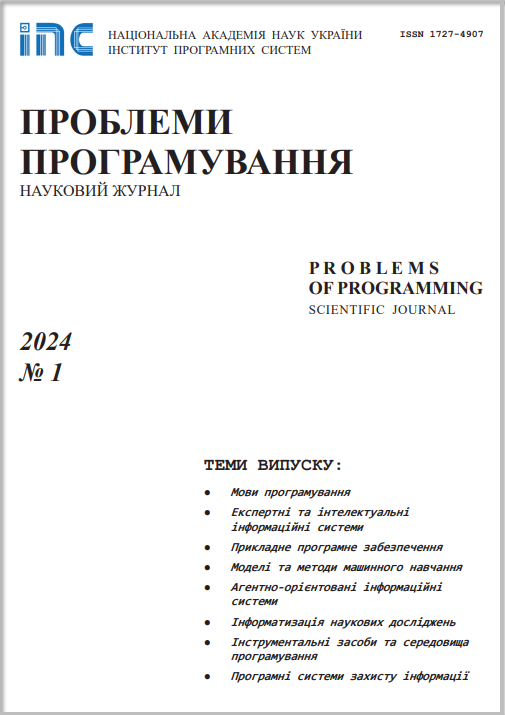Creation and test of applied software of network of wireless sensors for agriculture
Abstract
The article describes applied software of units of such complex hardware-software system, as plants` state monitoring system for application in agriculture and ecological monitoring. The mentioned system consists of data acquisition system in the form of wireless sensor network and adaptive part in the form of decision-making support system. The authors described main applied software of au- tonomous nodes of wireless sensor network and implementation of some program functions of decision-making support system. Wire- less sensor network includes many autonomous wireless sensors, so the main criteria during applied software creation was assuring the energy efficiency of operation of autonomous measuring nodes and network coordinator, and correct interaction of nodes within all network. As it is very difficult to perform testing of applied software of wireless nodes individually in field conditions, it was tested the network cluster, including hardware and software as a whole, in conditions like to applied task. The main parameters, which define the correctness of applied software operation, were estimated. These parameters include, for example, time of network selforganization, distance and quality of stable communication, time of autonomous operation of wireless nodes without charging batteries and so on. To create applied software for the decision-making support system, first of all, methods of plants` state diagnosing and estimating the factors, which influence the plant state, were developed. For this, the field experiments were conducted to determine sufficient dose of herbicide application and estimate the soil moisture using the chlorophyll fluorescence induction method. For processing measured data, several methods of machine learning were used, including neural network approach. Application of machine learning methods made it possible, on the base of acquired data, to make early diagnostics of influence of stress factors on the plant even before the appearance of visual manifestations of such negative influence and determine the decrease of soil moisture through the diagnostics of plant itself, and inform the user about this.
Prombles in programming 2022; 3-4: 425-436
Keywords
Full Text:
PDFReferences
Dolphin Engineering Sagl (2022) PreDiVine. [Online] Available from: https://www.dolphin-engineering.ch [Accessed: 31 July 2022].
AgroSense (2022). [Online] Available from: http://www.agrosense.hu [Accessed: 31 July 2022].
Libelium (2012) Wireless Sensor Networks to monitor food sustainability. [Online] Available from: https://www.libelium.com/libeliumworld/ food_sustainability_monitoring_sensor_network/ [Accessed: 31 July 2022].
Mendez, G.R., Yunus, M.A.M., Mukhopadhyay, S.C. (2012) A WiFi based smart wireless sensor network for monitoring an agricultural environment. in Instrumentation and Measurement Technology Conference (I2MTC). Graz, Austria, 2012. pp. 2640-2645.
https://doi.org/10.1109/I2MTC.2012.6229653
Romanov, V., Galelyuka, I., Antonova, H., Kovyrova, O., Hrusha, V., Voronenko, O. (2019) Application of wireless sensor networks for digital agriculture. Intelligent Data Acquisition and Advanced Computing Systems: Technology and Applications, IDAACS'2019. Metz, France. 2019, September 18-21. pp. 340-344.
https://doi.org/10.1109/IDAACS.2019.8924267
Chlorophyll fluorescence spectral discrimination by artificial neural network methods (2002). DEFRA project code HH1530SPC. 2002.
Kirova, M., Ceppi, G., Chernev, P., Goltsev, V., Strasser, R. (2009) Using Artificial Neural Networks for Plant Taxonomic Determina- tion Based on Chlorophyll Fluorescence Induction Curves. Biotechnology and Biotechnological Equipment. Volume 23, 2009. Issue sup1: XI Anniversary scientific conference. pp. 941-946. https://doi.org/10.1080/13102818.2009.10818577
https://doi.org/10.1080/13102818.2009.10818577
Goltsev, V., Zaharieva, I., Chernev, P., Kouzmanova, M., Kalaji, H.M., Yordanov, I., Krasteva, V., Alexandrov, V., Stefanov, D., Allkh- verdiev, S.I., Strasser, R.J. (2012) Drought-induced modification of photosynthetic electron transport in intact leaves: Analysis and use of neural network as a tool for a rapid non-invasive estimation. Biochimica et Biophysica Acta. 1817(8). 2012. pp. 1490-1498.
https://doi.org/10.1016/j.bbabio.2012.04.018
Rybka, K., Janaszek-Mankowska, M., Siedlarz, P., Mankowski, D. (2019) Machine learning in determination of water saturation defi- cit in wheat leaves on basis of Chl a fluorescence parameters. Photosynthetica. 57 (1). 2019. pp. 226-230. https://doi.org/10.32615/ ps.2019.017
https://doi.org/10.32615/ps.2019.017
Soja, G., Soja, A.M. (2005) Recognizing the Sources of Stress in Wheat and Bean by using chlorophyll fluorescence induction param- eters as inputs for neural network models. Phyton. Special issue: «D. Grill». 45 (3). 2005. pp. 157-168.
Pantazi, X.E., Moshou, D., Kasampalis, D. and Tsouvaltzis, P. (2014) Automatic Accessment of Phenotypes in lettuce plants by using Chlorophyll Fluorescence Kinetics and Machine Learning. International Conference of Agricultural Engineering. 2014. Zurich. 6-10 July 2014. pp.167-176.
Romanov, V., Galelyuka, I., Voronenko, O. (2021) WSN for Food Product Quality Control. Intelligent Data Acquisition and Advanced Computing Systems: Technology and Applications, IDAACS'2021. Cracow, Poland. 2021, September 22-25. pp. 580-583.
https://doi.org/10.1109/IDAACS53288.2021.9660852
DOI: https://doi.org/10.15407/pp2022.03-04.425
Refbacks
- There are currently no refbacks.


